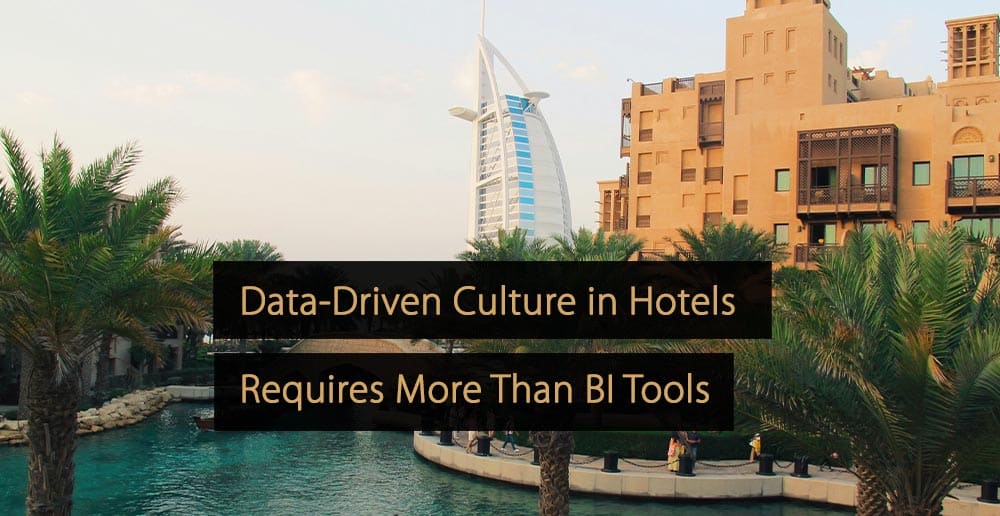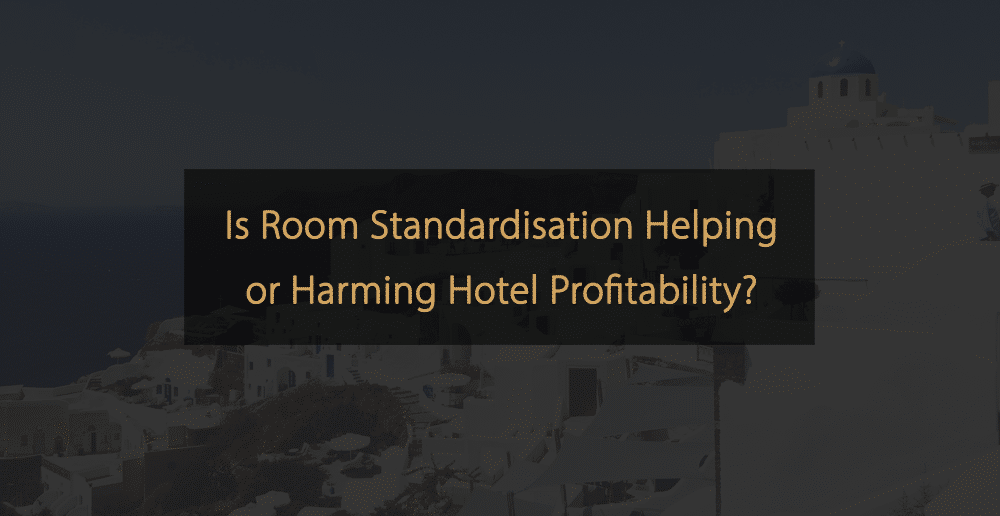Hotels across the globe have made massive investments in business intelligence (BI) solutions in recent years. From revenue and finance to operations and marketing, data is flowing in more ways than ever before. Yet, many hotel teams still struggle to make truly data-informed decisions. Why?
Buying a BI platform is easy. Embedding it into the fabric of how your teams think, decide, and act? That’s the hard part, but it’s also where the real value lies.
In this article, we’ll explore why a data-driven culture is essential for hotels, what can go wrong when overlooked, and how hotel leaders can start building a data-driven culture step by step.
In Data, Culture is at least as important as Technology
After working on hundreds of hotel BI implementations, one pattern emerges again and again: the technology isn’t the problem. The mindset is.
You can have the most powerful dashboards, perfectly blended data, and machine-learning forecasts but if your team still makes decisions based on gut feeling or anecdotes or “because that’s how it’s always been”, then nothing really changes.
Without a shared data mindset, BI tools gather dust. The end result? Lost time, money, and opportunities.
So what does a healthy, data-informed culture actually look like in a hotel?
- Leaders make decisions based on fresh data and insights, not last week’s reports or status quo opinions.
- Commercial teams track impact, not just performance.
- Operations optimize in real-time rather than reactively.
- Sales and marketing align targeting to actual demand signals, not assumptions.
Building this kind of culture doesn’t happen overnight. But it’s absolutely achievable—if you stop seeing BI as just a tool and start treating it as a strategic enabler of change.
Why You Need Culture in Addition to a BI System
Let’s break down why culture matters as much as (if not more than) the BI tool itself:
1. A BI Tool Is Not a Strategy
Business intelligence platforms don’t tell you what to do. They show you what’s happening. Without a clear vision and set of goals, dashboards become glorified scoreboards. Culture gives purpose to the data. It makes sure your team knows why they’re measuring what they’re measuring.
2. The Best Tools Fail Without Buy-In
Even the smartest system is useless if no one uses it, teams revert to old habits. Excel exports reappear. The tool becomes an afterthought unless usage is reinforced by leadership and ingrained in everyday workflows.
3. Insights Only Matter If They Drive Action
Culture determines what happens after someone sees the data. Does your team act on it? Discuss it? Plan around it? Or does it become tomorrow’s next ignored chart? A data-driven culture makes insights actionable and makes action happen.
4. Hotels Are Complex, People-Driven Environments
Hotels rely heavily on diverse, cross-functional teams. A data-driven culture aligns revenue, finance, operations, and marketing around shared truths. Data-driven culture breaks silos.
How to Build a Data-Driven Decision Culture: A Step-by-Step Guide
So how do you get there? What’s the playbook for hotels that want to turn BI from “just another tool” into a true way of working?
Here’s a structured approach, built on lessons from real-world hotel BI implementations.
1. Leadership Sets the Tone
If the GM, Commercial Director, or CFO isn’t using data to make decisions, no one else will. Data-driven cultures are top-down. When leadership openly uses data to challenge assumptions, guide actions, and ask better questions it creates an expectation and routine for others to do the same.
Pro tip: Ban data-less opinions in your exec meetings. Require that all updates or recommendations are supported by data, even if imperfect.
2. What Does Success Look Like?
Before launching your BI project or evangelizing usage, ask yourself Why you are doing this.
Is the goal better forecasting? Total revenue optimization? Segment profitability? Market share growth? Reduced reporting workload?
Clarity here is crucial. Without a shared destination, you’ll end up with disconnected dashboards and unclear expectations in the team.
Choose a few powerful KPIs that reflect your strategy: Net RevPAR, Market Share Index, or Total Revenue per Guest, and anchor your BI adoption around them.
3. Map Team Requirements
Different departments need different insights, tailored to the user profile and analytical objective. Don’t make the mistake of building one-size-fits-all dashboards. It is more effective to have several different versions of a dashboard to meet each user’s requirements.
Curate what matters for each audience:
- Revenue Managers: lead time shifts, pick-up by segment and channel, forecast accuracy.
- Finance: net revenue after acquisition cost, GOP evolution, changes to cost trends.
- Operations: room type profitability, demand surges, cancellation trends.
- Sales & Marketing: account production, segment profitability, channel efficiency.
Start simple. Deliver value quickly. Then iterate and evolve.
4. Think MVP: Start Small, Scale Smart
Don’t try to boil the ocean. The most common BI rollout mistake? Over-engineering from day one.
Instead, start with a minimum viable product (MVP)—a small set of dashboards that solve real, high-impact problems. Then expand based on feedback and usage.
This creates momentum, builds trust, and avoids overwhelming users.
5. Train for Literacy, Not Just Clicks
Tool training isn’t enough. You need to build data literacy: teach your teams how to interpret trends, spot patterns, understand correlations, and ask better questions. Go beyond “how to use the dashboard” and teach “how to make decisions with data.”
Use train-the-trainer approaches, involve real scenarios, and don’t be afraid to repeat sessions.
6. Change the Language: From Gut Feel to Insight
The way your team talks about decisions shapes your culture. Encourage language like:
- “The data suggests…”
- “I noticed a drop in pickup velocity…”
- “What’s driving the change in Net ADR?”
Discourage phrases like “I think we’re doing fine” or “it feels like demand is weaker.” Replace gut feel with data curiosity.
This subtle shift builds analytical muscle.
7. Make Data the Default in Every Meeting
Every commercial or operational meeting should include a data review. With your BI tool doing this at scale will become second nature quickly. This doesn’t mean drowning in charts. Just aligning on live, meaningful insights before any decision is made.
Better yet, use interactive dashboards in meetings so the team can explore, ask questions, and engage in real time.
8. Reinforce Action and Impact
Data doesn’t drive value. Actions do. After surfacing an insight, ask: What will we do about this?
Track the impact of those decisions: Did it improve revenue? Did guest satisfaction increase? Did marketing spend become more efficient?
If you’re not measuring change, you’re just reporting instead of analyzing.
Common Pitfalls to Avoid
As you build a data-driven culture, be aware of these common traps:
- “Too much, too soon” – Focus beats comprehensiveness. Don’t overwhelm users with every metric under the sun.
- Leadership detachment – If senior leaders don’t model the behavior, don’t expect change in the rest of the organization.
- Treating BI as IT – This isn’t a system rollout. It’s a mindset shift. It belongs in commercial leadership, not just tech.
Conclusion: From Data to Direction
The winners won’t be the hotels with the most data. They’ll be the ones who turn that data into direction: who use data-driven insights to act faster, align teams, and outmaneuver competitors.
That requires more than dashboards. It requires a shared mindset. A common language. A commitment from leadership. And a culture that values facts over hunches.
So yes: buy the BI tool. But more importantly, invest in educating the people who will bring it to life. In the end, it’s not your system that drives change. It’s your culture.
Free Checklist: Start Using Data in Your Hotel’s Decision-Making
Using data to power insights and decisions at your Hotel can position you for commercial success, help increase guest satisfaction, and reduce costs. This checklist provides a starting point for hoteliers new to data analytics in the hotel industry.
Click here to download the checklist “Start Using Data in Your Hotel’s Decision-Making“.
More Tips to Grow Your Business
Revfine.com is the leading knowledge platform for the hospitality and travel industry. Professionals use our insights, strategies, and actionable tips to get inspired, optimize revenue, innovate processes, and improve customer experience.Explore expert advice on management, marketing, revenue management, operations, software, and technology in our dedicated Hotel, Hospitality, and Travel & Tourism categories.








Leave A Comment